This past Friday morning was a very cold but nice February day and I met my friend Arni in the Kawartha Lakes region to spend a few hours taking pictures of a number of different birds. It was a great morning out and I was able to get some decent shots of three species I’d never photographed before, a Pileated Woodpecker, Common Redpolls and Evening Grosbeaks. It was well worth standing around in -20°C temperatures to get three “new ones”.
The Common Redpoll is an amazing little bird that breeds in the North (around James & Hudson’s Bays) and winters in the southern parts of Ontario. Although they can be seen year around we generally only see Redpolls in the winter months. The small size of the Common Redpoll means they have a large surface area to volume ratio which causes them to quickly lose body temperature putting them at great risk of freezing to death. To prevent this from happening Redpolls must eat almost constantly to provide the necessary fuel to keep them warm. They actually have throat pouches that can hold extra food for eating later should food sources become scarce. Their intense focus on getting food makes them quite unphased by people. Redpolls can withstand lower temperatures than any other songbird and their feathers are highly insulative by design allowing them to brave bitter cold spells during which they often fluff their feathers up trapping layers of air around their bodies that act as layers of insulation.
All of the images below were taken using a Canon 1D Mk III with a 500mm f/4 telephoto lens and 1.4x teleconverter creating a focal length of 700mm. The gear was mounted on a Gitzo carbon fibre tripod and Whimberley gimbal head.
The first image is of a male Common Redpoll.
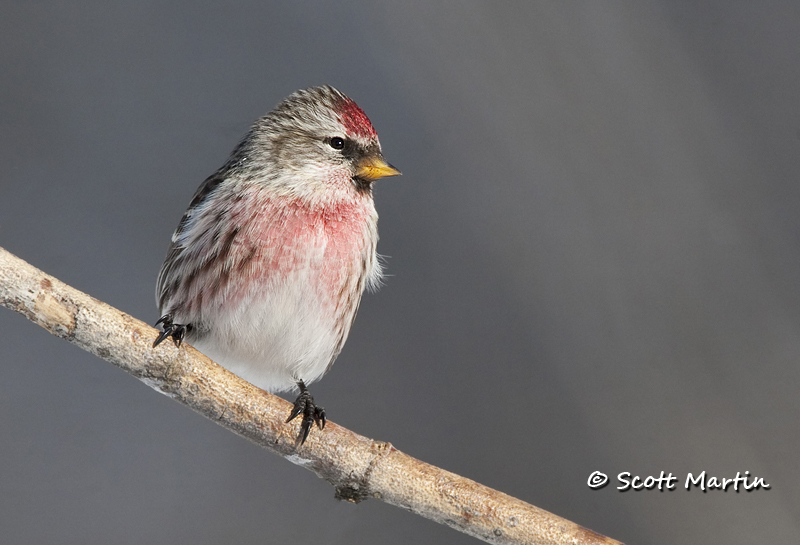
The remaining images are of female Common Redpolls
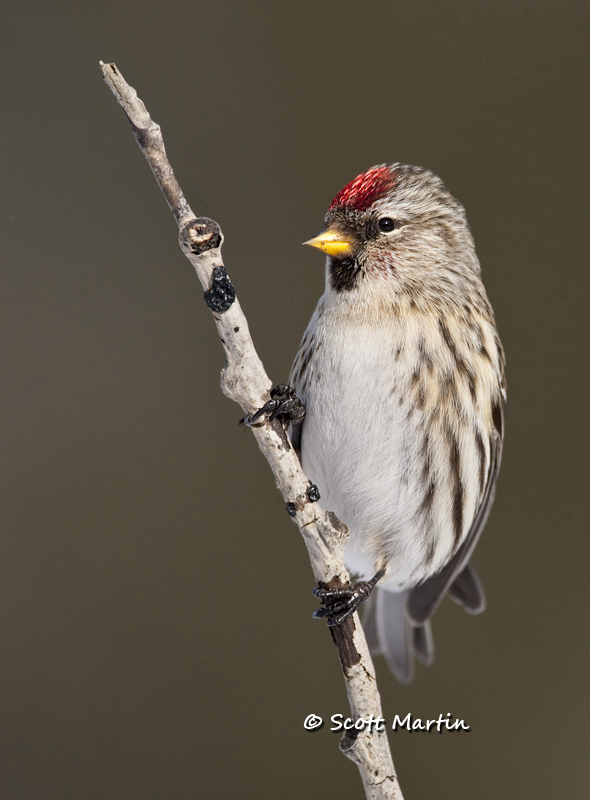
.
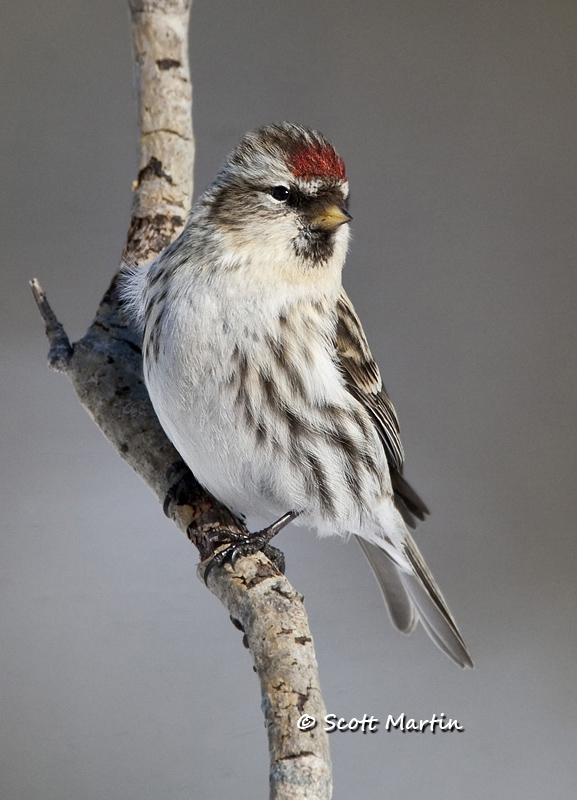
.
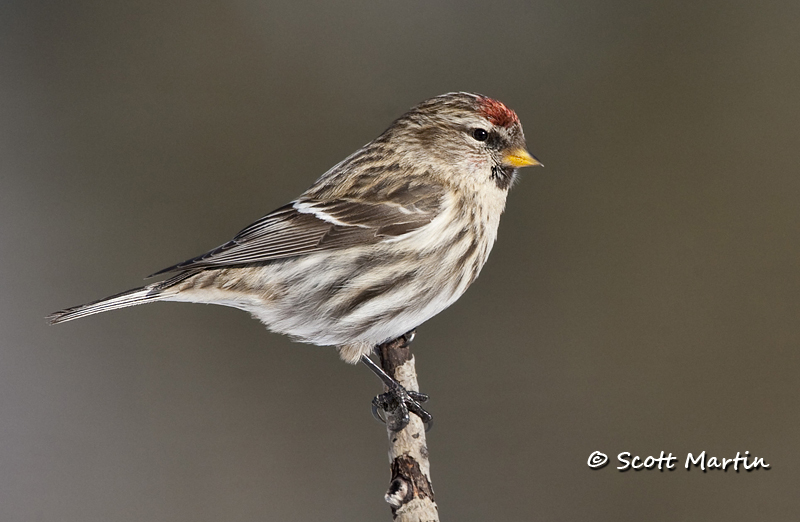
.
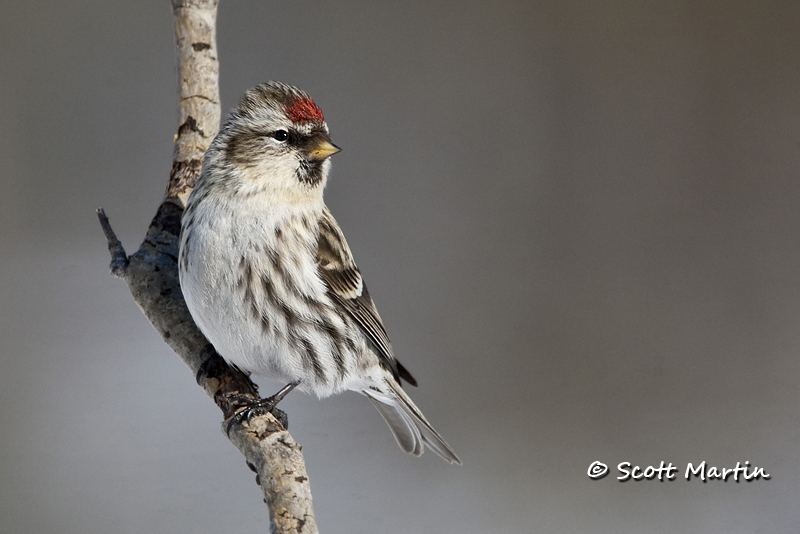


Thanks for commenting on my blog so that I could discover yours! Fantastic photos and I look forward to following your posts.
Thanks Robert & I also enjoyed your site. Looking forward to following you and keeping up to date via Twitter as well.
Great set of images Scott! I never get tired of seeing and photographing these cute little bundles of feathers, maybe its because we see them only every couple of years? I had a hard time deciding between the Grosbeaks or the Redpolls. Since I haven’t seen the Grosbeaks for a couple of decades, they won. I hope last Friday’s trip was fruitful.
Thanks Arni & I think I owe you lunch for making the 100th comment on this website! Friday was great and although I haven’t looked closely it appears that there are some male keepers. Spent a couple of hours with the Halls Road Barred yesterday which was great too.
I share your wonder at how these birds survive the winter. A couple of years ago I read an interesting book on the subject by Bernd Heinreich (by some miracle it was in my local library at Brampton)- “Winter World: The Ingenuity of Animal Survival”, in which he describes, amongst other things, how the golden-crowned kinglet also survives low-temperature winters. What is also striking is that there are so many tiny insects, larva etc. which survive the sub-zero temperatures to provide food for the birds.
Thanks for taking time to comment Bill and I will keep my eyes open for the book you’ve suggested. Its always fun to photograph Kinglets, however its a lot like shooting pin balls!!
Great shots Scott!
Thanks Don.
4 to 1 ratio of females to males. Hmmm. Love your work Scott – keep it up!!
I’m glad you liked these Chris and thanks for taking time to comment. See you in Princeton in a couple of weeks!